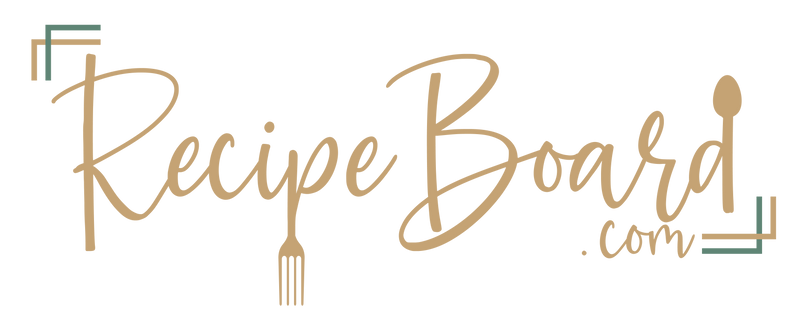What to Do When Your Cutting Board with Recipes Becomes Hard to Read
Posted on September 14 2025,

Personalized, engraved cutting boards hold a special place in the heart of many kitchens. They aren't just practical tools; they're cherished keepsakes that capture the warmth of family recipes shared and passed down through generations. These boards, often featuring handwritten recipes, hold memories of cooking with loved ones and the joy of recreating time-honored dishes. Each scratch and groove tells a story, turning the board into a piece of history that you can hold in your hands.
However, as time goes by, the engravings on these beloved boards can start to fade. Constant use, regular cleaning, and everyday wear can make the words and designs less clear, challenging us to hold onto the memories they represent. But don't worry—there are simple ways to restore these engravings and bring your board back to its former glory. Let's explore some practical approaches that will help you keep your cutting board with recipes as a cherished part of your kitchen.
Signs Your Cutting Board with Recipes Is Becoming Hard to Read
Over time, even the best quality cutting boards can show signs of wear. Recognizing these signs early can help you take steps to preserve the engravings and the sentimental value they hold:
- Faded Engravings: The most noticeable sign is when the lettering or designs start to lose their contrast and become hard to distinguish. This often happens due to exposure to water and cleaning agents over time.
- Discoloration and Stains: Frequent contact with food, especially juices and spills from fruits, vegetables, or meats, can lead to discoloration. These stains can seep into the wood, making the engraved text even harder to read.
- Surface Scratches and Wear: Repeated cutting and chopping can create a network of scratches that obscure the original engravings. The board might also become uneven, which affects how clearly you can see the writing.
Pay attention to these signs as they can signal that it's time to start with some restoration efforts. Early prevention is key, and by recognizing these symptoms, you can take action to maintain your board's charm and functionality. It's like catching a cold before it becomes the flu—early attention can prevent bigger hassles down the line. This careful maintenance helps you preserve both the board's utility and the precious stories engraved on it, ensuring it remains a beloved piece of your kitchen for years to come.
Steps to Restore the Readability of Your Cutting Board with Recipes
Taking action to restore your cutting board can seem daunting, but with some patience and care, you can breathe new life into it. Start with a gentle cleaning approach to remove surface grime without causing further harm. Use a soft brush and mild soap to avoid soaking the board in water, which can worsen the fading.
After cleaning, applying food-safe mineral oil helps rejuvenate the wood. Rub the oil using a clean cloth, making sure to follow the grain of the wood. This not only enhances the natural color but also protects the surface from future stains. Repeat this process regularly, about once a month, to maintain the board's beauty and readability.
If the engravings are deeply faded, consider consulting a professional for re-engraving. Experienced craftsmen can delicately refresh the text, ensuring it's clear and easy to read without sacrificing the original charm. Choosing professional help can prevent mistakes that might occur with a DIY attempt.
Preventing Further Wear and Tear
Once your board is restored, adopting preventative habits can keep it looking great for years. Here are some simple tips to help extend its life:
- Regular Maintenance: Condition the board with oil regularly to maintain its moisture and prevent cracking.
- Proper Cleaning: Wipe the board with a damp cloth after use. Avoid soaking it in water or placing it in a dishwasher.
- Storing Safely: Keep the board in a dry, well-ventilated area. If possible, store it upright to allow air circulation on both sides.
Building these habits ensures your cutting board stays a cherished part of your kitchen. The effort you invest in its care pays off in both appearance and longevity.
When to Consider a New Engraved Cutting Board
Sometimes every effort leaves a piece that doesn’t meet your expectations anymore, and that’s okay. Here are some signs it might be time to consider a new and beautifully engraved board:
- Deep Cracks or Warping: These are indicators that the board may be too worn for further use.
- Unreadable Engravings: If the text is beyond restoration, a new board can recapture those memories.
Having a second board is beneficial too. It provides a backup when one is being cleaned or oiled and offers variety in kitchen decor and function. When searching for a new board, focus on durability, material, and design to match your needs and aesthetic preference.
Bringing New Life to Your Old Cutting Board
If parting ways with your old board feels too difficult, consider giving it a new purpose. Repurposing is a great way to keep those sentimental ties strong. You can transform the board into a rustic display piece by mounting it or using it as a kitchen accent. Alternatively, a light sanding and sealant can help it find new life as a serving tray for special occasions.
These creative alternatives keep your cherished boards within your home and honor the memories they hold. Remember that preserving or repurposing your treasured cutting board is a personal and rewarding process, reflecting your taste and keeping family traditions alive.
Celebrate your cherished memories by exploring a beautifully crafted cutting board with recipes. Discover how Recipeboard.com can help you capture and preserve those meaningful kitchen moments with a range of personalized options to suit your taste. Find the perfect choice to keep the heart of your kitchen alive.
